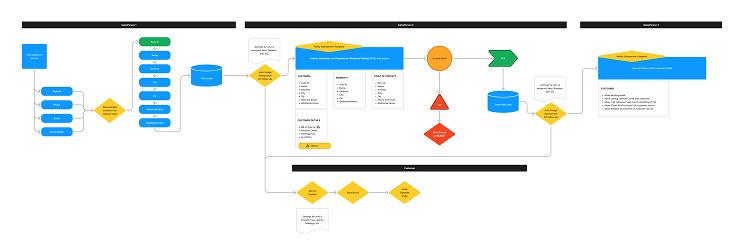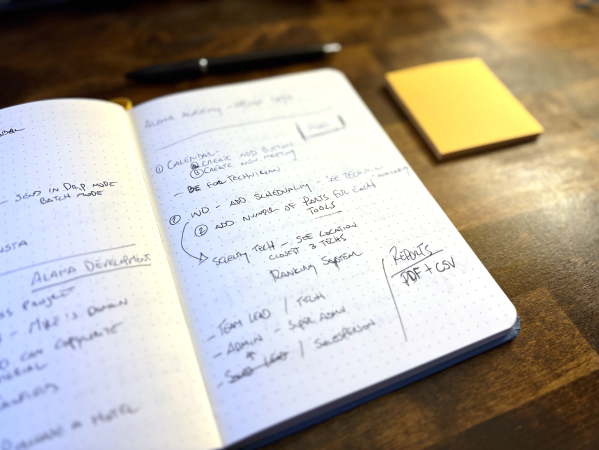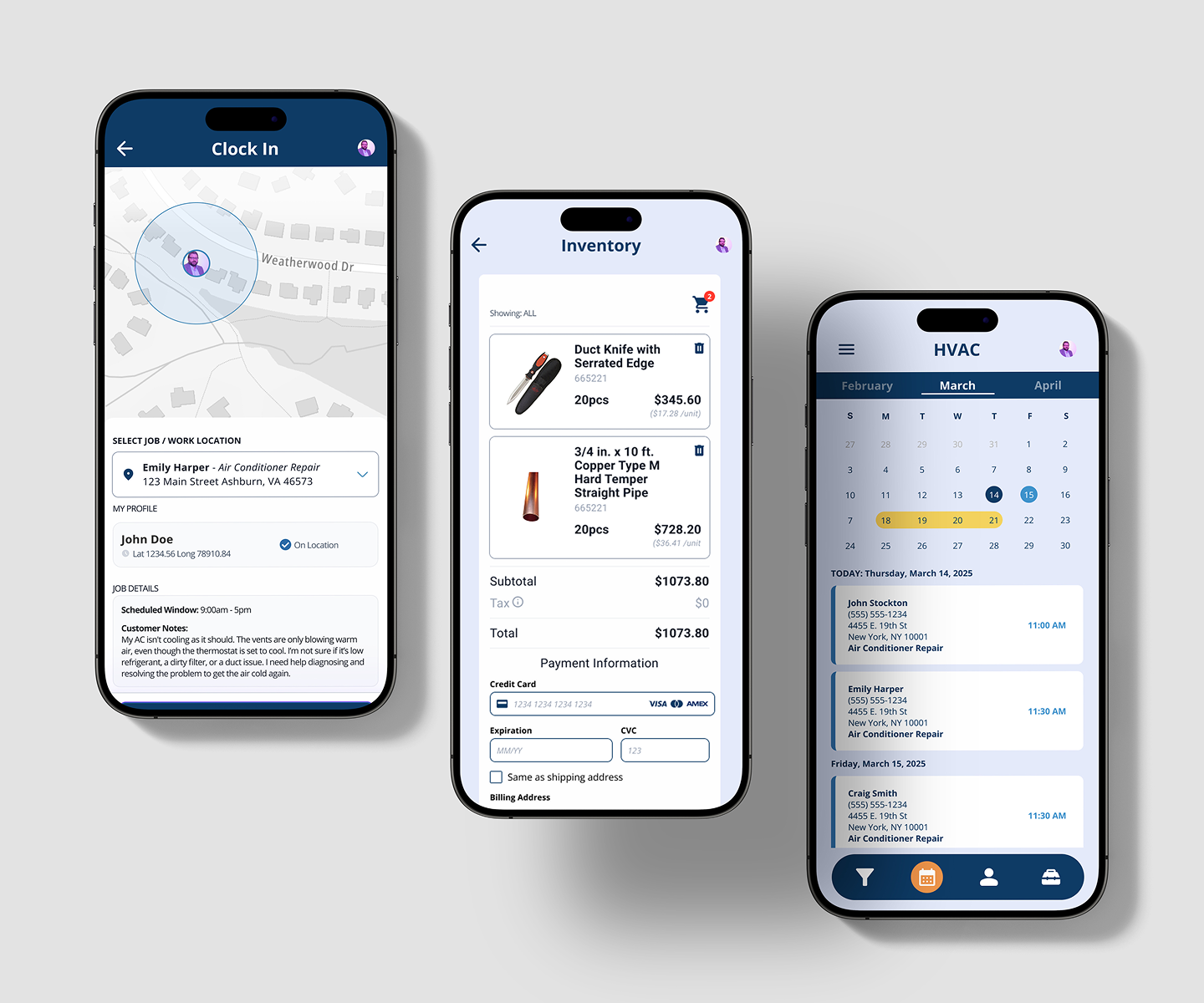How we started
We initiated the project by engaging directly with HVAC business owners, technicians, and administrative staff to understand their pain points. Through discovery workshops and user interviews, we identified critical issues such as inefficient work order management, complex scheduling, and scattered customer records. These insights formed the foundation of our problem statement and guided our design direction.
We then defined our project goals, set clear user personas, and outlined key features, ensuring that every design decision was backed by real user needs. This user-centered approach positioned us to create a solution that would directly address the pain points we uncovered.



Determining Use Flow
We began with a thorough analysis of the core tasks performed by HVAC businesses, from receiving customer requests and creating work orders to scheduling technicians and tracking job completion. We mapped out each user journey for the app’s key personas: salespersons, technicians, and administrative staff. By visualizing the end-to-end workflow for each role, we identified critical touchpoints and decision points, ensuring that the app would seamlessly guide users through their tasks.
To further refine the user flow, we developed wireframes and interactive prototypes, testing them with real users to validate ease of navigation and logical task progression. Feedback revealed opportunities to optimize task sequences, such as enabling technicians to update job status directly from the field or allowing admins to batch-process customer information. This iterative process ensured that the final user flow was intuitive, efficient, and tailored to the real-world needs of HVAC businesses.
Application design
The final design of the app delivered a clean, intuitive, and user-friendly interface that seamlessly integrated essential business functions. Technicians could easily access and update work orders in real time, view their schedules, and navigate to job sites with a single tap. Administrative staff gained a centralized dashboard for managing customer information, scheduling technicians, and tracking job status, significantly reducing administrative overhead.
The app’s responsive design ensured smooth functionality on both desktop and mobile devices, empowering technicians in the field and managers in the office alike. Consistent user feedback validated the app’s design, with users praising its simplicity, speed, and ability to streamline daily operations. Ultimately, the HVAC app transformed how businesses managed their workflows, enhancing productivity and improving customer satisfaction.

